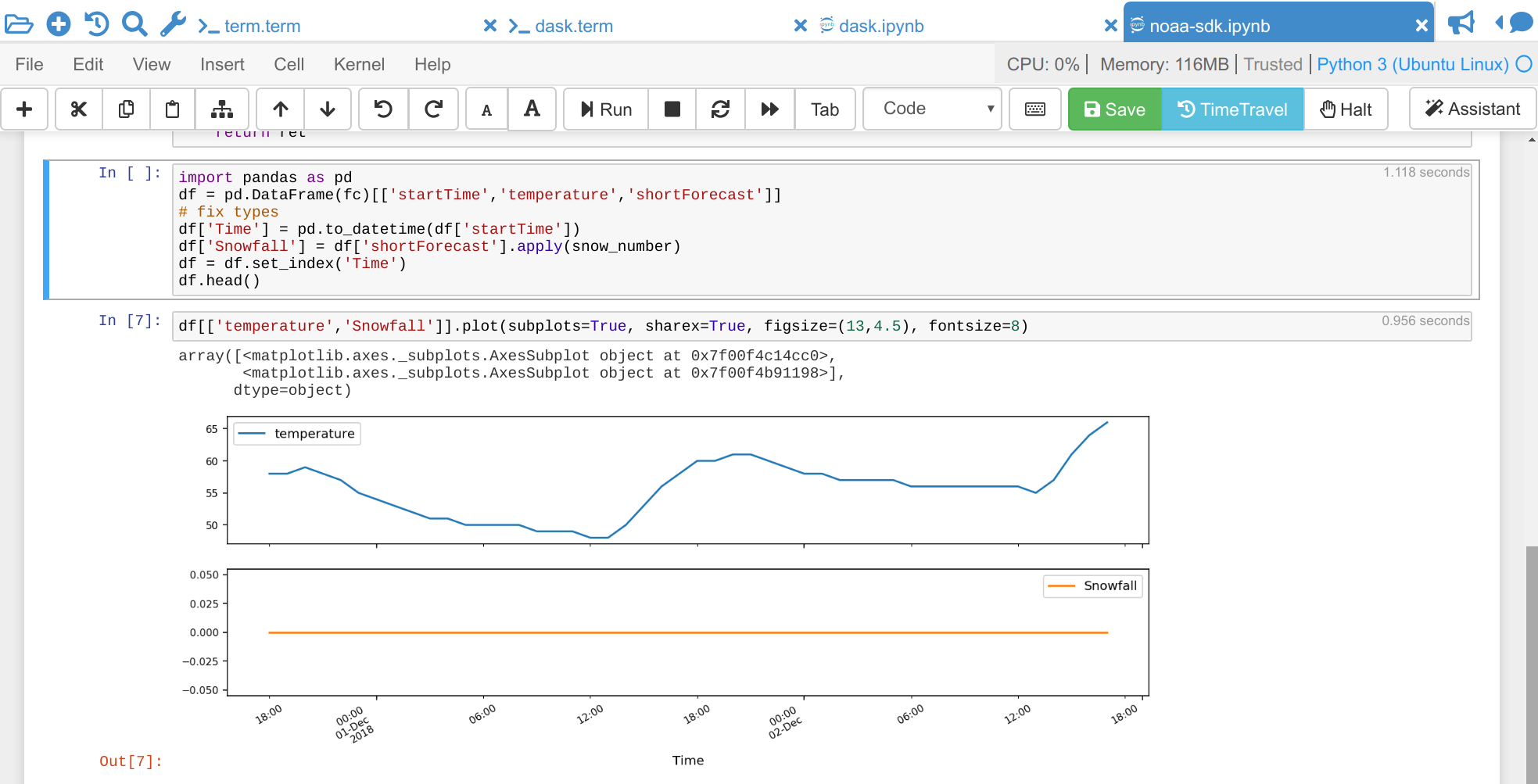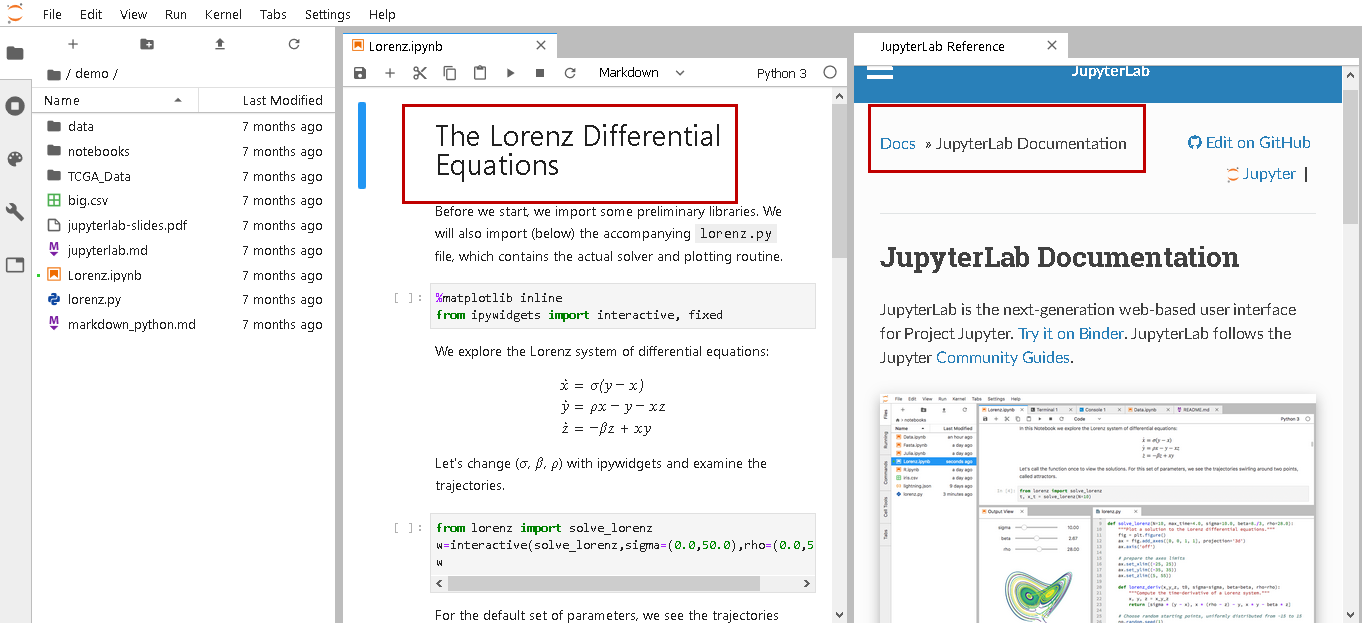

- ADD TEXT TO PLOT PYTHON JUPYTER NOTEBOOK PDF
- ADD TEXT TO PLOT PYTHON JUPYTER NOTEBOOK INSTALL
- ADD TEXT TO PLOT PYTHON JUPYTER NOTEBOOK UPDATE
- ADD TEXT TO PLOT PYTHON JUPYTER NOTEBOOK CODE
- ADD TEXT TO PLOT PYTHON JUPYTER NOTEBOOK PLUS
When a code cell is in command mode, the A key can be used to add a cell above and the B can be used to add a cell below the selected cell.
ADD TEXT TO PLOT PYTHON JUPYTER NOTEBOOK PLUS
Using the plus icons in the main toolbar and a cell's hover toolbar will add a new cell directly below the currently selected cell. Add additional code cellsĬode cells can be added to a Notebook using the main toolbar, a cell's add cell toolbar (visible with hover), and through keyboard commands.

You can also use the mouse to change the mode by clicking the vertical bar to the left of the cell or out of the code/Markdown region in the code cell. To move from command mode to edit mode, press the Enter key. To move from edit mode to command mode, press the Esc key. When you're in edit mode, the solid vertical bar is joined by a border around the cell editor. When a cell is in command mode, a solid vertical bar will appear to the left of the cell. When the cell is in edit mode, the cell's contents (code or Markdown) can be modified. When the cell is in command mode, it can be operated on and accept keyboard commands. It can be in command mode or in edit mode. When a cell is selected, it can be in two different modes. When no bar is visible, the cell is unselected. The current state of a cell is indicated by a vertical bar to the left of a code cell and editor border. While working with code cells, a cell can be in three states: unselected, command mode, and edit mode. Add your code to the empty code cell to get started.

Create a code cellīy default, a blank Notebook will have an empty code cell for you to start with and an existing Notebook will place one at the bottom. The Notebook Editor makes it easy to create, edit, and run code cells within your Jupyter Notebook. Work with code cells in the Notebook Editor
ADD TEXT TO PLOT PYTHON JUPYTER NOTEBOOK PDF
To have SVG graphics in a PDF, either ensure that your output includes a non-SVG image format or else you can first export to HTML and then save as PDF using your browser. Also, be aware that if you have SVG-only output in your Notebook, they will not be displayed in the PDF.
ADD TEXT TO PLOT PYTHON JUPYTER NOTEBOOK INSTALL
If you don't, you will be notified that you need to install it when you select the PDF option. Note: For PDF export, you must have TeX installed. You'll then be presented with a dropdown of file format options. To export, select the Export action on the main toolbar. You can export a Jupyter Notebook as a Python file (. You can save your Jupyter Notebook using the keyboard shortcut Ctrl+S or File > Save. You can run multiple cells by selecting Run All, Run All Above, or Run All Below. When in command or edit mode, use Ctrl+Enter to run the current cell or Shift+Enter to run the current cell and advance to the next. You can also use keyboard shortcuts to run code. Once you have a Notebook, you can run a code cell using the Run icon to the left of the cell and the output will appear directly below the code cell. If you have an existing Jupyter Notebook, you can open it by right-clicking on the file and opening with VS Code, or through the VS Code File Explorer.
ADD TEXT TO PLOT PYTHON JUPYTER NOTEBOOK UPDATE
Next, select a kernel using the kernel picker in the top right.Īfter selecting a kernel, the language picker located in the bottom right of each code cell will automatically update to the language supported by the kernel. You can create a Jupyter Notebook by running the Jupyter: Create New Jupyter Notebook command from the Command Palette ( ⇧⌘P (Windows, Linux Ctrl+Shift+P)) or by creating a new. If you attempt to open a notebook when VS Code is in an untrusted workspace running Restricted Mode, you will not be able to execute cells and rich outputs will be hidden. Harmful code can be embedded in notebooks and the Workspace Trust feature allows you to indicate which folders and their contents should allow or restrict automatic code execution. When getting started with Notebooks, you'll want to make sure that you are working in a trusted workspace. Once the appropriate environment is activated, you can create and open a Jupyter Notebook, connect to a remote Jupyter server for running code cells, and export a Jupyter Notebook as a Python file. To select an environment, use the Python: Select Interpreter command from the Command Palette ( ⇧⌘P (Windows, Linux Ctrl+Shift+P)). To work with Python in Jupyter Notebooks, you must activate an Anaconda environment in VS Code, or another Python environment in which you've installed the Jupyter package. View, inspect, and filter variables using the Variable Explorer and Data Viewer.Create, open, and save Jupyter Notebooks.This topic covers the native support available for Jupyter Notebooks and demonstrates how to: Visual Studio Code supports working with Jupyter Notebooks natively, and through Python code files.

Jupyter (formerly IPython Notebook) is an open-source project that lets you easily combine Markdown text and executable Python source code on one canvas called a notebook.


 0 kommentar(er)
0 kommentar(er)
